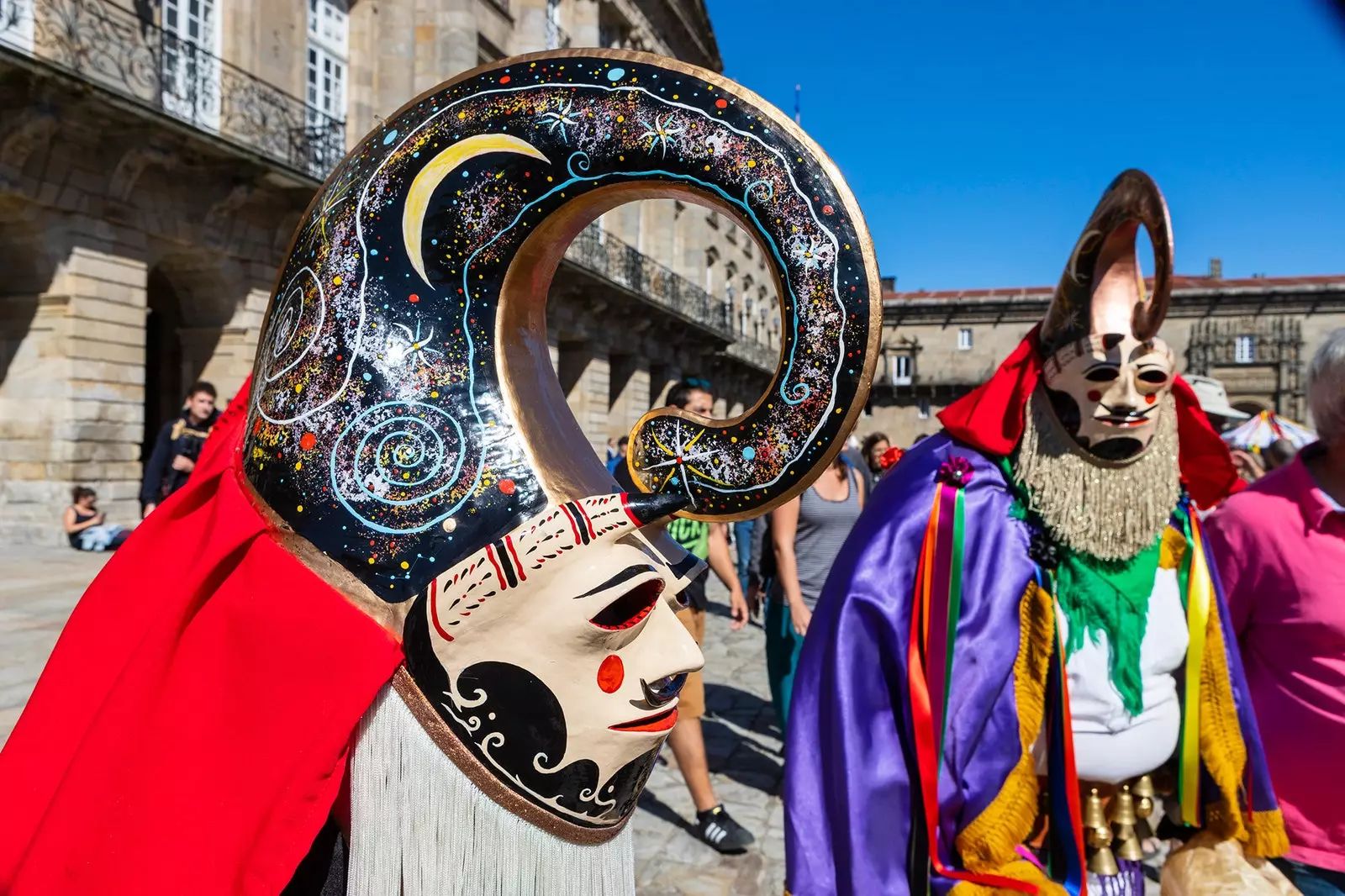
The carnival in Xinzo de Limia is from another planet
Is in Xinzo de Limia , in the province of Ourense , and the entroido (the carnival) lasts five weeks. It already started on February 2 with the sunday fareleiro , where there is a pitched battle of flour and lanterns (wheat bran ). It's not a joke, it was about a thousand kilos that were thrown without mercy. Saturday the 8th was Colgamento do Meco and this sunday the screens will come out for the first time . The party will continue until Ash Wednesday , although Tuesday is the big day, where there will be floats and brass bands in quantity.
The screens or masks are one of those elements common to the entroido in these lands. In Xinzo it is the face of the devil with horns and a colored crest. . The Devils they go with swollen cow guts that look like boxing gloves making sure everyone is dressed up. Tradition has it that whoever does not dress up, these devils will dance around him and then they will take you to the nearest bar and force you to pay for a round of wine.
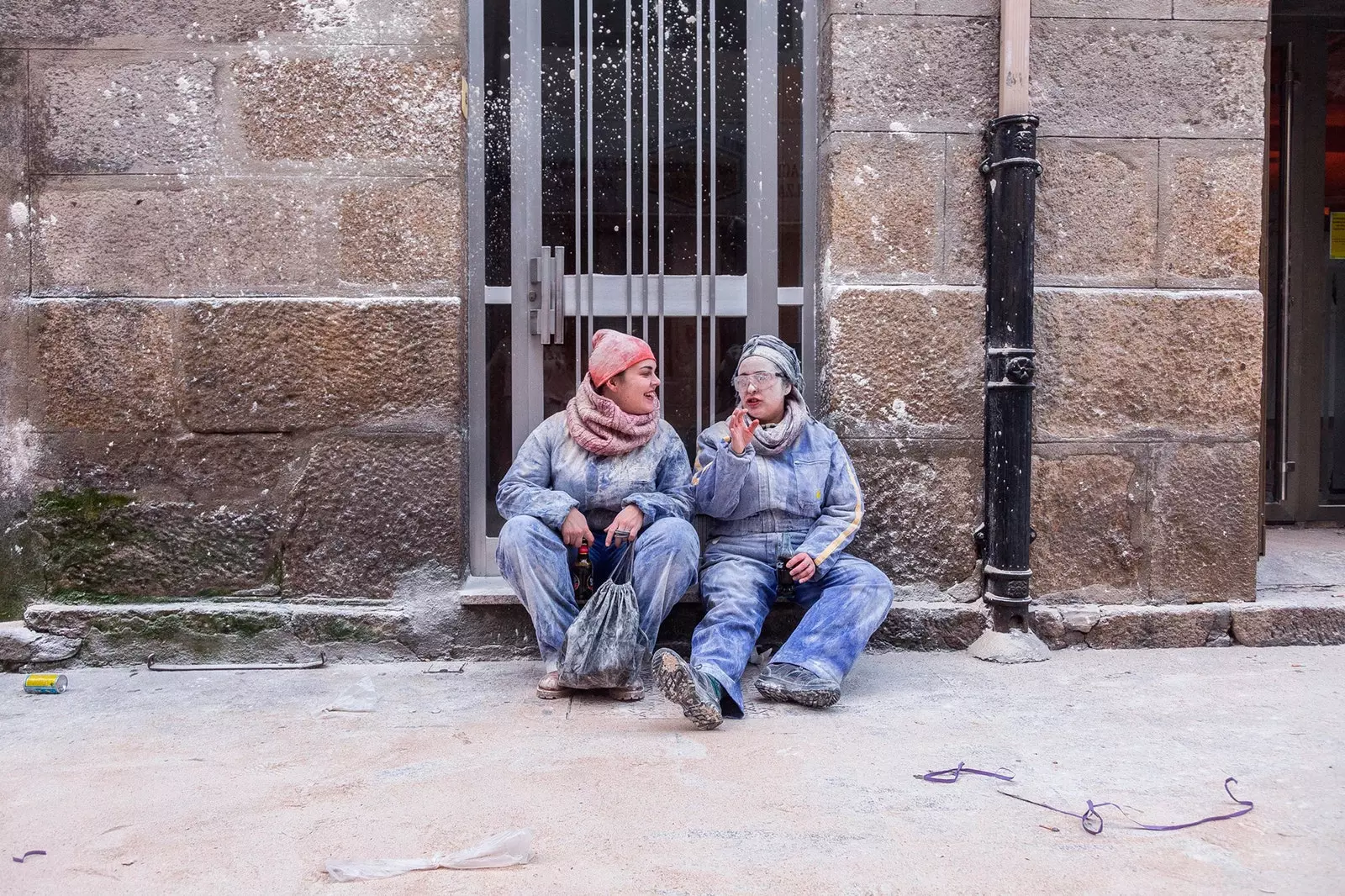
A pitched battle of flour and lanterns
In Laza (Verin, Ourense) a carnival takes place that has medieval reminiscences . The More expensive they are worn by peliqueiros , they are made of birch wood and have painted animal motifs. They wear zamarras and shocks , which are cowbells that weigh a kilo and a half, and are dedicated to chasing everyone who passes by to shake them - we insist on not going in disguise , which is the reason here is blasphemy and is severely punished. They are very elaborate suits that can weigh more than 15 kilos..
The monstrosity monday , in the morning at Picota Square , nothing better than another pitched battle, the farrapada , with mud-soaked rags. After the war, stew and dessert - with bica and licorca, of course -. And afternoon, the brunette -a character who covers himself with a blanket and and a cow's head - down from Cimadevila to lift women's skirts, while minions they dedicate themselves to thank the public for the visit throwing ants at them with vinegar and flour . What generosity, what education, pardiez.
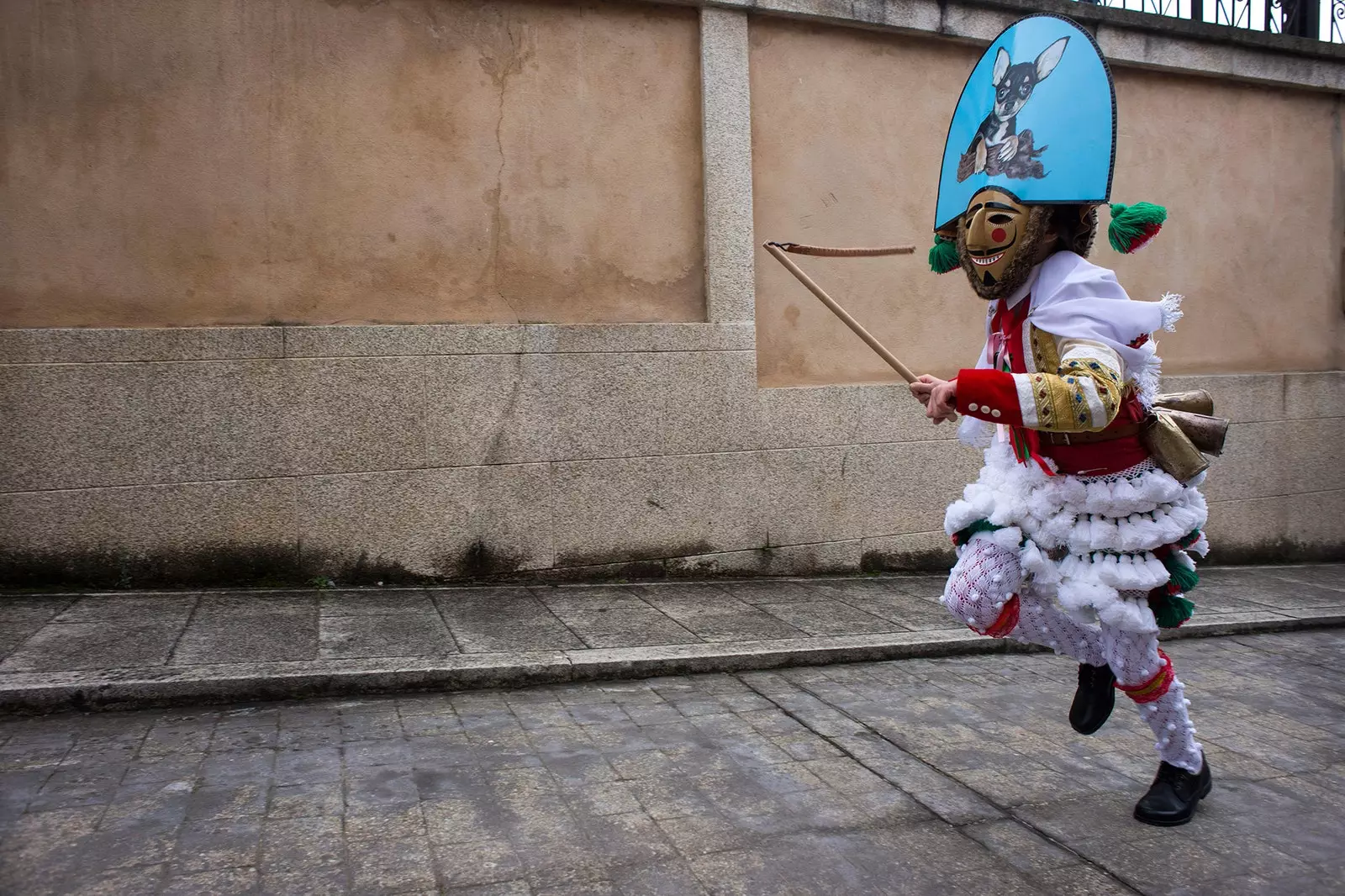
Peliqueiros of Laza
The same thing happens in Verin . same as in lasso , here they are called cigarrons to the masked characters and that species of a whip with which they dedicate themselves to persecute you until they ask for mercy . The story comes from afar, 16th century , and the origin of the mask is because they seem to be the face of the tax collector of the Counts of Monterrei , hence the mustache and evil smile. Nothing better than laughing at your problems at carnival by disguising yourself as the evil that lies in wait for you. Flour is also thrown on Entroido Monday, but as a symbol of purification.
In Maceda , nevertheless, the felos are friendly and affectionate figures that embrace the public and play with the children, despite the fact that the costume is very similar to these. The only difference is the averages, from black color , and that, at least according to tradition, only singles can dress as felos.
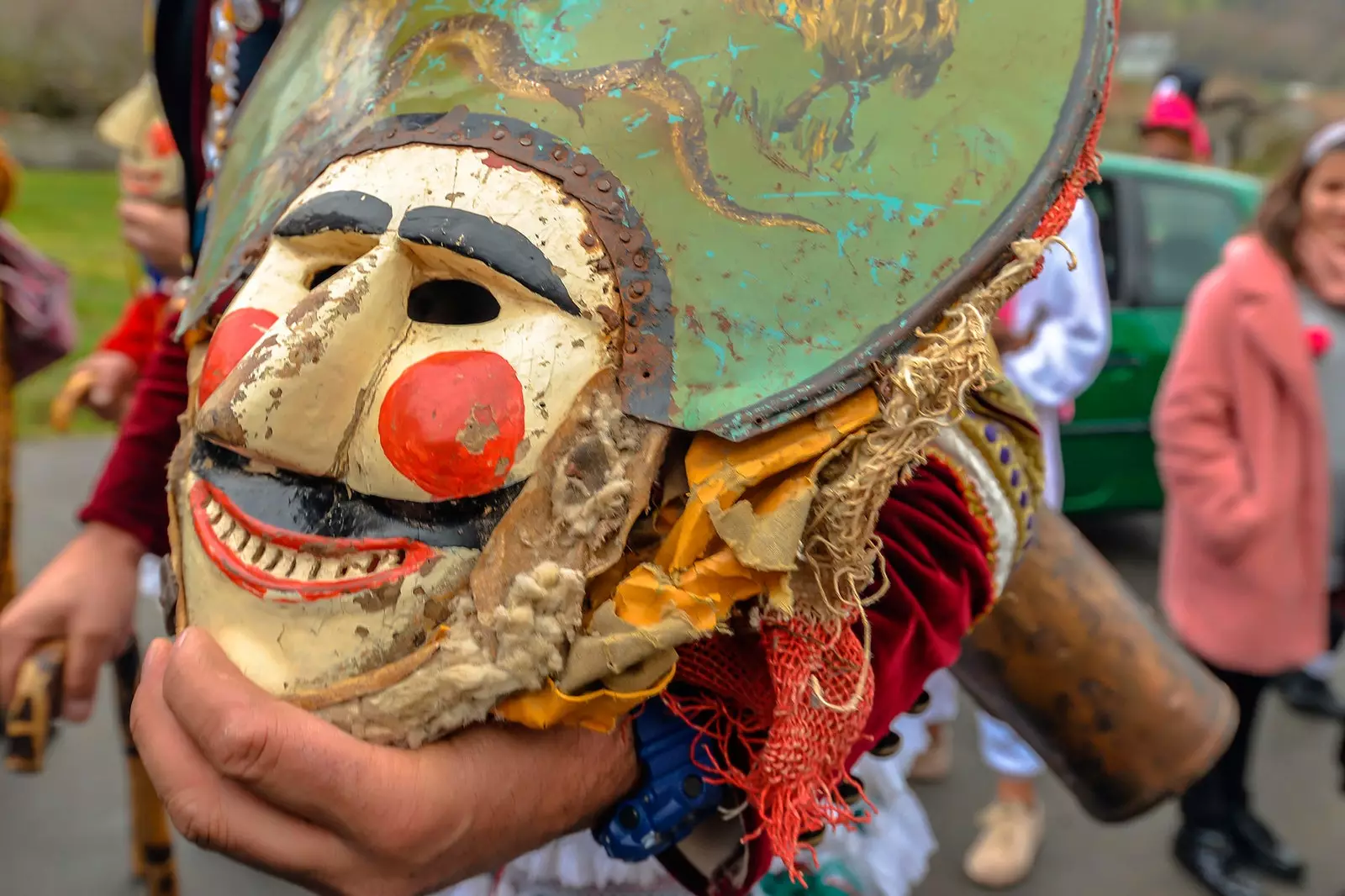
Maceda's carnival
In Viana do bolo there's also masks and with a lot of solera . The entroido here can boast of being the oldest : have pre-roman cult elements in which the arrival of spring and harvests were celebrated, after the cold winter. Who they wear the masks they are the boteiros , and their costumes, made of silk of many colors and their "moncha" , a wooden rod on which they are mounted and which is used to hit those who stand in front of the comparsas. They are costumes so colorful that they even had their own international controversy. It was three years ago, in September 2017, when a collection of Dolce & Gabbana had the same motifs and figures . Although nothing was confirmed, the controversy lasted its own.
A little further from the Ribeira Sacra , between the provinces of A Coruña and Pontevedra are the Xenerais do Ulla . The best known are celebrated in the municipalities of Boqueixón, A Estrada, Santiago de Compostela, Silleda, Teo, Touro, Vedra and Vila de Cruces . They are dialectical crosses between members of two armies who fall off a donkey and, incidentally, also talk about politicians, celebrities and gossip. The origin goes back to the War of Independence against the French . These generals, mounted on horseback, have the peculiarity of their suits full of beads and their hat, full of colored feathers.
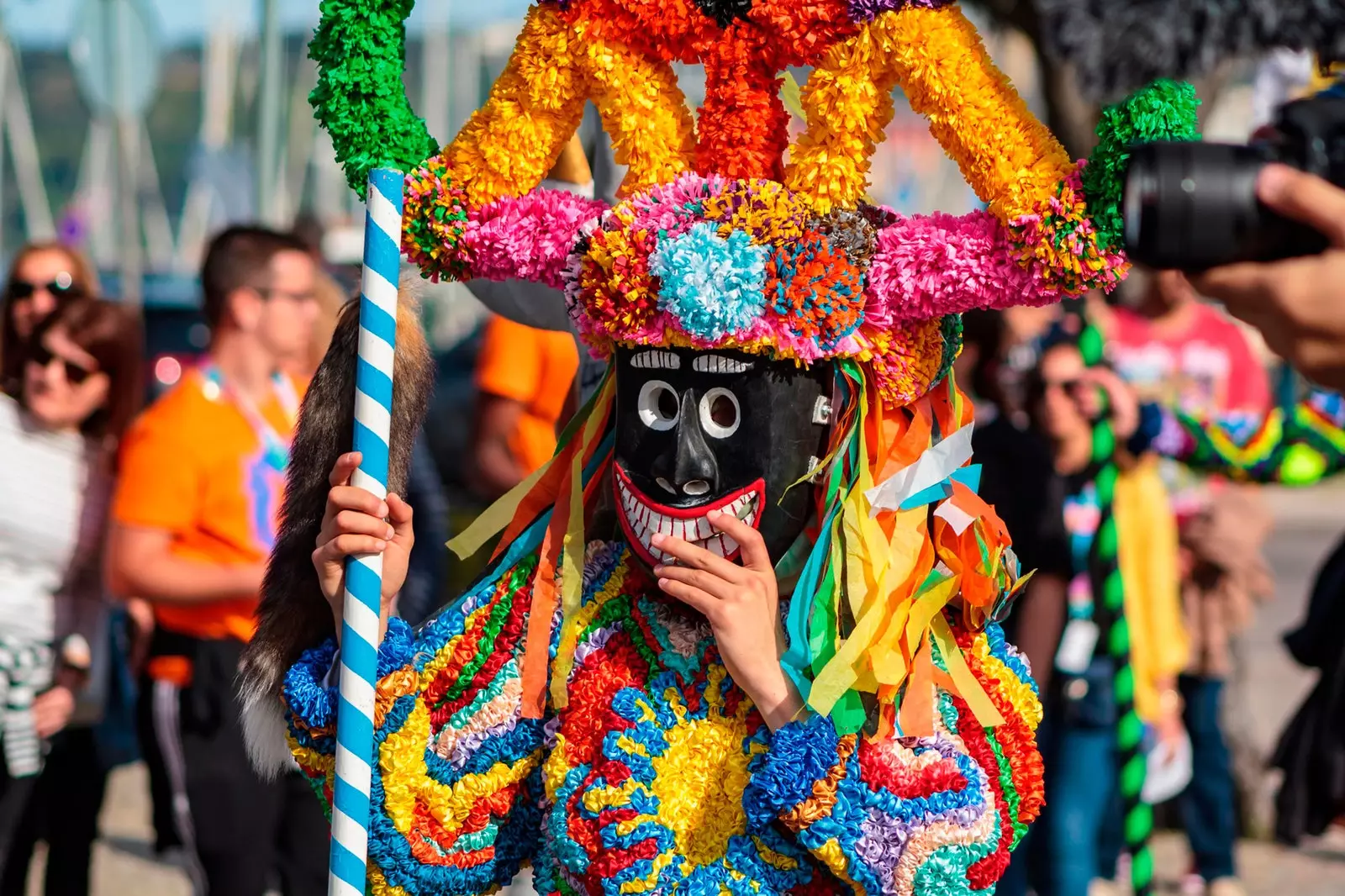
Carnival in Viana do Bolo
If what you prefer is make fun of social classes , nothing better than seeing the Madamas and the Galans in Cobres . This town of estuary of Vigo he dresses in his best clothes and differentiates between the upper classes, with their huge hats and colorful costumes full of jewelry, necklaces and ornaments, and the poorest, the villagers and the "merdeiros". They tour the neighboring parishes of Saint Christina and Saint Adrian , entering houses and offering dances since the 18th century. Others, like the merdeiros, dressed in crude costumes, dedicate themselves to bothering those who are not dressed up.
They are the best known entroids and the ones that attract the most visitors, but not the only ones. There are also the boats of Vilariño de Conso, the folión of Manzaneda, the vellaróns of Castrelo de Cima, the troteiros of Bande (a tradition that is now being recovered and that was forgotten for decades), the wedding of the Pita in Eiroás (a post-war story between two widowers), the vergalleiros de Sarreaus, the chockeys of Monte Alto in A Coruña (like many entroido parties, it was prohibited during the dictatorship but was celebrated the same way, in this case, this party is born from that prohibition), the flyers of Chantada, the Ravachol of Pontevedra (in the burial of a parrot that in 1985 caused a whole carnival to revolve around it) and the Salcedo bear in Pobra de Brollón (if you have seen the first chapter of the series Neboa then you can imagine what that bear is like).
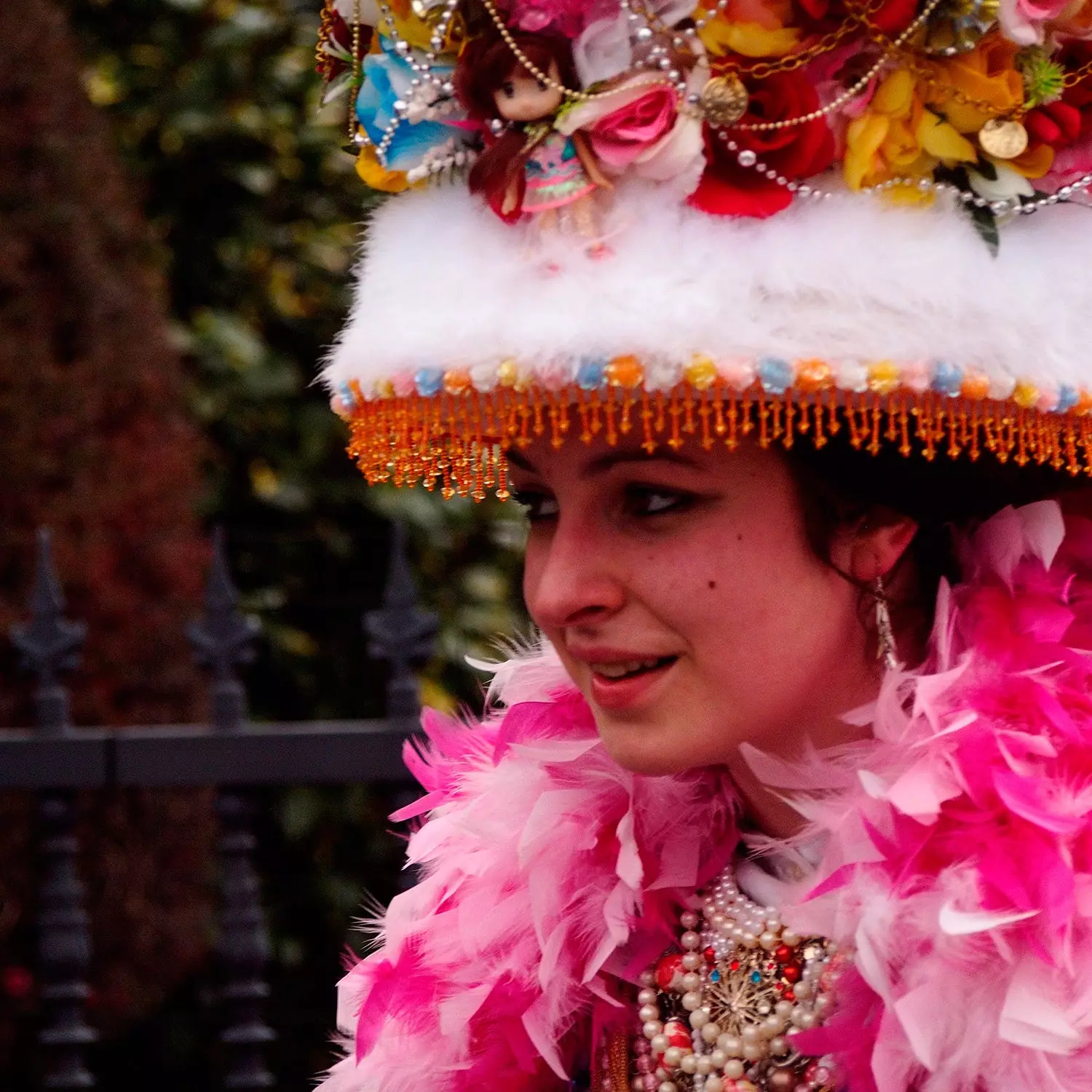
Madamas and the Galans in Cobres
As an extra ball, the vermouth of the ladies of Lalín . A party that started like many others. A group of friends who dress up and have a good time. There were a dozen men dressing as women. Now there are more than two hundred men and women who dress as they please.
After all, that's what it's about, isn't it?
